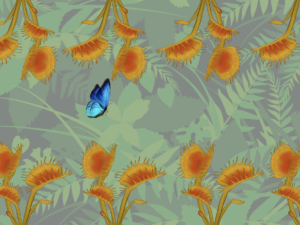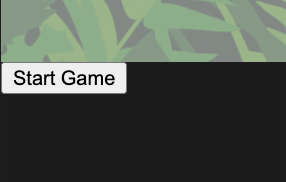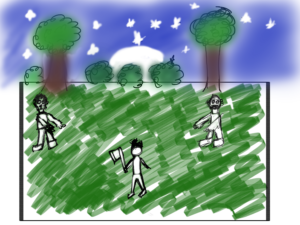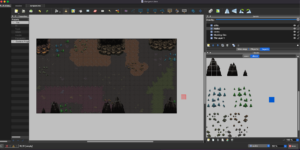Concept:
I originally had this idea in thinking about OOP and continued to work on it since. Wild Wild Taxi is a game that I have played for the majority of my life, even now, most of my friends know how much I enjoy the game. Unfortunately, as I mentioned before because Flashplayer is no longer available I have decided to recreate the game so be able to enjoy the game in some way now.
In the actual design of the game, in all of the different versions of the game, there has been a different theme, from basic car driving, to what I wanted to look like the highways of Abu Dhabi, to what is now the streets of New York. Looking at the game now, it just is nice to look at than before and feels more like a game.
Implementation:
To be able to actually recreate the game I knew there would have to be different states, or screens of the game, which I’ll call START, INSTRUCTION, GAME, GAME OVER. In each of these pages there were different components, the first two START and INSTRUCTION, are images I created based on the taxi theme and using the key pressed function to move onto the next mode. Once on the GAME mode, you can use the left and right arrows to move from lane to lane within the set boundaries that are the lanes. In the GAME mode, you don’t lose unless you click the left or right arrow, which in a way isn’t very accurate of a game, but I appreciate games that don’t make me lose when I am not playing since I often tend to multitask, but in the future, this could be a pause mode so that the entire game pauses. Once you crash into a car, from any of the four corners, the game is then over and you can restart the game, and continue where you left off. With all of this, there is a sound that is in the background that adds to the effect of the chaos or the “Wild Wild” component.
Challenges:
In envisioning the game, I didn’t realize all the different components that went into creating a game. In the end, there were two main challenges, first, while there is sound, the sound I originally wanted was to play an ignition sound during the START and INSTRUCTION phase, then a sound of cars driving in the GAME phase, and finally a crash sound when the cars crash and the game is over. As it is now, is also okay, but I think having the sound as feedback to the actions of the player adds to the interaction between the game and the player. While I was able to overcome this challenge, I didn’t realize the about of thinking that would go into making the game end when the cars are crashing, it was all very logical, but it took a lot of thinking to understand and account for all the scenarios in which a car is crashing in relation to the X and Y position of both the Taxi and the other cars.
Reflection:
Overall, this was definitely another learning experience. I got off to a slow start, but I am satisfied with the current state of the game. Throughout this process, and at this point in the semester I have realized that I have two major challenges within the class that was apparent throughout this project. First, I think coding requires you to think logically while also paying attention to details in a way that I am not used to. I think this forces you to look at every line of code and think in the order of what needs to happen when, for example, what line needs to be drawn, and does it happen before or after the cars move. And I think along with this, I like to understand why something is the way it is, so as I am trying to figure out what exactly needs to be written in the code, I am also trying to understand every component of the line and where it is overall. In time, I think this will get better, but for now, it is intimidating. The other major challenge, that I think is, even more, intimidating in a way is the endless amount of possibilities when I am creating something, the ability do that makes me feel like I have to think of all the possibilities and consider which I will like the most in the end, the process in coding it, and then the visual component that I in every assignment, I spend the most time. Overall, this has all made me appreciate WILD WILD TAXI more, and excited to continue to work on it to ultimately replicate the original version.
With that, here is WILD WILD TAXI!
*sound doesn’t work when embedded







